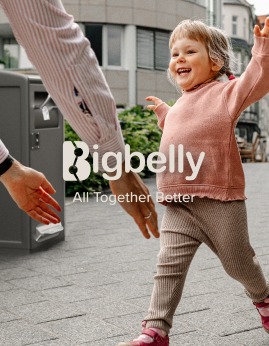
The Internet of Things (IoT) is well known to most people involved in technology innovation. Need a refresher? Check out one of our recent blog posts which defines IoT. Simply put, it’s a growing network of physical objects that feature an IP address for internet connectivity where the communications occur between objects and other Internet-enable devices and systems. IoT projects are found across most industries – higher education, healthcare, manufacturing, logistics, consumer electronics, automotive, etc.
When it comes to government, the promise of IoT is designed to solve everyday problems associated with urban living. Urban IoT initiatives are flush with sensors for fire and smoke detection, remote monitoring and performance of infrastructure related to core city services, reporting the structural integrity of roadways and bridges, alerting consumers to parking availability, broadcasting public service announcements or city events and news, tracking lost items (people and pets, too!), smart lighting, and more.
But municipal IoT goes well beyond sensors. The real promise comes from the networked city where the data collected is analyzed to improve services that adjust dynamically to reflect real-time needs. In addition, the information is shared openly with all city departments and agencies to serve multiple uses for better city planning and management.
The Internet of Civic Things (IoCT) can make streets safer, city-based businesses more effective, and city services more helpful and delivered more efficiently. “There’s an app for that” holds true for the IoCT. Just about every civic duty has a correlated application that streamlines registrations, supports online or mobile payments, converts data to visual images such as heat maps for instantaneous transit schedules, as well as delivers real-time crowd alerts for information sharing.
City managers can use big data for city planning and management. Big data allows government leaders to learn from historical happenings, identify trends, and predict future behaviors for better planning and fostering sustainability.
So where can you find IoCT? Applications, appliances, and devices have already found homes in cities worldwide. Some are more noticeable than others, like smart street lighting or parking apps. Others are embedded in city infrastructure and monitor energy use, public space waste, pollution, sound levels. This real-time measurement is incorporated into existing systems such as those that deliver public warnings about weather and natural disasters.
Beyond sensors that collect data directly are applications that support the collection, analysis, and reporting of crowd-sourced data (or open data). According to Opendefinition.org, “open data and content can be freely used, modified, and shared by anyone for any purpose (subject, at most, to requirements that preserve provenance and openness).”
Consumers are more than willing to share information. There are numerous applications that collect, record, and analyze consumer-generated data, which is used to map and share information like health and environmental data. Regardless of the data sourcing mechanism, cities are using the insight to refine, reinvent, or introduce entirely new services. Private industry is using this open data to create new products.
The Internet of Civic Things is a bilateral process: ‘information in’ helps cities run more efficiently and effectively, and ‘information out’ directly provides residents, visitors and workers with insight to city-specific happenings. The private and public sectors can mine the data to create entirely new services and products that make daily urban life more enjoyable, safer, and frankly simpler to exist within urbanized municipalities.
The reality is that governments will continue to collect data, the sources for data collection/reporting will continue to expand beyond government, and citizens and businesses will continue to demand access to the data. Thanks to IoCT, open data is driving growth, inventiveness, and innovation. For both public and private sector, data is the basis for growth, improved performance, and more meaningful engagement with city constituents – from city organizations and leaders to visitors, residents to workers.



